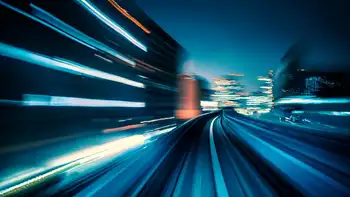LEDs help restaurant, hospitality industry save
By Electricity Forum
NFPA 70b Training - Electrical Maintenance
Our customized live online or in‑person group training can be delivered to your staff at your location.

- Live Online
- 12 hours Instructor-led
- Group Training Available
Welland Ontario based CRS Electronics launched two new LED (light emitting diode) general lighting products into the Canadian marketplace. The first is the CRS MR16 LED luminaire manufactured by CRS Electronics, the second an LED downlight (often used to replace Halogen units) from LLF based in Morrisville, North Carolina and now distributed by CRS in Canada. The launch took place at the 2008 Canadian Restaurant and Foodservices Association food and beverage show held recently at Exhibition Place in Toronto.
“After years of experience in LED product markets, CRS is excited be on the leading edge of the development of LED general lighting,” stated Scott Riesebosch, president of CRS Electronics. “We are excited about our new products and believe it is the right light for the restaurant and accommodations industry. They provide the correct light attributes for the sector, reduce bottom line costs associated with electricity bills and help the environment,” added Mr. Riesebosch.
A CRS MR16 satisfies food industry presentation needs with a Colour Rendering Index (CRI) of 95.2, while serving up an 87% reduction in energy use and a 95% reduction in relamping maintenance. Restaurateurs can replace Halogen MR16 track, pot lights and recessed can lights with CRS LEDÂ’s and achieve energy savings with a payback period of less than two years.
While energy efficiency is an obvious benefit of LED lighting, CRS Electronics has long realized the need to also address the quality of light and lighting effect. CRS has developed LED products that will satisfy the architect, interior designer and foodservice, office or retail planner.
“We were determined to provide a product that would be accepted within the design community, recognizing that there are specific light quality issues and requirements,” said Mr. Riesebosch. He also noted, “We are confident that we can blend acceptable lighting quality with energy efficiency and overall performance.”
As significant consumers of electricity, hotel, motel and convention centre operators will be interested in the experience of the Palace Pier (located on the Toronto waterfront) condominiums use of CRSÂ’s LED technology. The lighting needs of the common space corridors and hallways of the 44 floor Palace Pier condo are very similar to the 24/7 lighting needs of hotels. The retrofits project is expected to deliver energy reductions of between 80-87% and has payback of between 9-12 months.
LEDÂ’s are most commonly found in traffic signals, vehicle tail lights, exit signs, holiday lights and architectural displays. LED lighting reduces energy costs and lighting relamping. With a life expectancy of 40,000 hours, LED products are replaced less often. Lighting currently contributes to at least 20% of North American and global energy consumption and plays a significant role in restaurant and hotel overheads.
The CRS LED MR16 becomes the replacement for previous halogen technology while the recessed downlight replaces standard incandescent or CFL style recessed downlights. Both LED products contain no gases and no mercury, which are present in other lighting systems. The LED version of the MR16 consumes just 4.5 watts and is suitable for many applications, while the recessed downlight replaces a standard 60 watt incandescent downlight using less than 12 watts.
Last fall, the world-leading performance of the LR6 LED downlight was recognized as the grand prize winner in an award competition sponsored by the American Lighting Association and verified by tests in independent labs under the direction of the U.S. Department of Energy.











